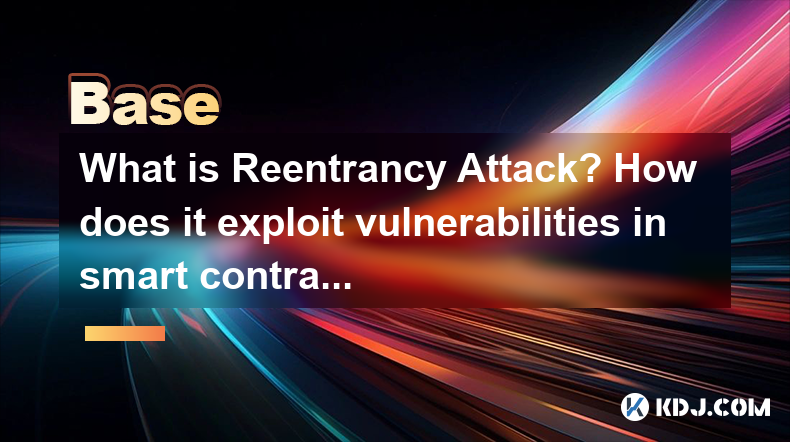-
 Bitcoin
Bitcoin $117,462.8204
-2.03% -
 Ethereum
Ethereum $3,061.1595
1.10% -
 XRP
XRP $2.9139
-2.19% -
 Tether USDt
Tether USDt $1.0002
0.02% -
 BNB
BNB $685.1357
-1.24% -
 Solana
Solana $161.3803
-2.11% -
 USDC
USDC $1.0002
0.04% -
 Dogecoin
Dogecoin $0.1948
-2.92% -
 TRON
TRON $0.2987
-0.89% -
 Cardano
Cardano $0.7330
-1.27% -
 Hyperliquid
Hyperliquid $47.7888
0.13% -
 Stellar
Stellar $0.4514
-2.93% -
 Sui
Sui $4.0169
2.74% -
 Chainlink
Chainlink $15.7088
-2.57% -
 Hedera
Hedera $0.2356
-3.33% -
 Bitcoin Cash
Bitcoin Cash $488.6656
-3.61% -
 Avalanche
Avalanche $21.2955
-1.47% -
 UNUS SED LEO
UNUS SED LEO $9.0415
0.42% -
 Shiba Inu
Shiba Inu $0.0...01332
-0.82% -
 Toncoin
Toncoin $3.0124
-0.62% -
 Litecoin
Litecoin $94.2175
-2.07% -
 Polkadot
Polkadot $4.0011
-0.61% -
 Monero
Monero $333.5714
-3.46% -
 Uniswap
Uniswap $9.1114
-1.56% -
 Dai
Dai $1.0000
0.02% -
 Ethena USDe
Ethena USDe $1.0005
0.00% -
 Bitget Token
Bitget Token $4.4951
1.87% -
 Pepe
Pepe $0.0...01242
0.47% -
 Aave
Aave $321.9943
0.51% -
 Bittensor
Bittensor $434.1984
5.13%
What is Reentrancy Attack? How does it exploit vulnerabilities in smart contracts?
Reentrancy attacks exploit smart contract flaws, letting malicious contracts repeatedly call back before transaction completion, draining funds or manipulating contract state. Prevention requires using the Checks-Effects-Interactions pattern and reentrancy guards.
Mar 05, 2025 at 11:36 pm

Key Points:
- Reentrancy attacks exploit a vulnerability in smart contracts where a malicious contract can repeatedly call back into the vulnerable contract before the initial transaction is fully completed.
- This allows the attacker to drain funds or manipulate the contract's state.
- Prevention involves careful coding practices, including using the Checks-Effects-Interactions pattern and employing reentrancy guards.
- Understanding the mechanics of reentrancy attacks is crucial for developing secure smart contracts.
What is a Reentrancy Attack?
A reentrancy attack is a common vulnerability in smart contracts that allows attackers to exploit a flaw in the contract's logic to repeatedly call back into the contract before the initial transaction is finalized. This recursive calling allows the attacker to manipulate the contract's state and drain funds. The core issue lies in how the contract handles external calls within its functions.
How Does it Exploit Vulnerabilities in Smart Contracts?
The attack hinges on a race condition. Imagine a smart contract function that sends funds to an external address. If this function doesn't properly handle the external call, a malicious contract can intercept the callback. This malicious contract can then call the vulnerable function again, repeatedly, before the initial transaction completes, effectively draining the funds.
Understanding the Mechanics: A Step-by-Step Example
Let's illustrate with a simplified example. Consider a withdraw function:
- Step 1: The user initiates a withdrawal request.
- Step 2: The contract checks the user's balance.
- Step 3: The contract transfers funds to the user's address.
- Step 4: The contract updates the user's balance.
If the order is flawed, a malicious contract could exploit this sequence. If the balance update (Step 4) occurs after the funds transfer (Step 3), the malicious contract can call the withdraw function again before the balance is updated, withdrawing more funds than it should.
The Checks-Effects-Interactions Pattern
To mitigate reentrancy vulnerabilities, developers often use the Checks-Effects-Interactions pattern. This pattern ensures that all checks are performed before any state changes or interactions with external contracts occur.
- Checks: Verify all preconditions before proceeding. This includes checking balances, allowances, and other relevant parameters.
- Effects: Modify the contract's internal state. This involves updating balances, transferring tokens, etc.
- Interactions: Interact with external contracts or off-chain systems. This includes sending Ether or tokens to other addresses.
By following this order, the contract minimizes the window of vulnerability.
Reentrancy Guards: A Practical Solution
Another effective method is implementing reentrancy guards. These are mechanisms that prevent recursive calls to a specific function. A common approach is using a boolean variable that's set to true when a function is called and reset to false upon completion. Any recursive call made while this variable is true will be blocked.
- The guard variable is checked at the beginning of the function.
- If the guard is
true, the function immediately returns. - If the guard is
false, it's set totrue, the function executes, and the guard is reset tofalseat the end.
Advanced Reentrancy Attacks and Mitigation Techniques
More sophisticated attacks might involve exploiting multiple vulnerabilities or using delegatecall, which allows a contract to execute code from another contract in the context of the calling contract. Mitigation strategies for these advanced attacks involve careful auditing, formal verification, and the use of more robust security patterns. Thorough testing and code reviews are also essential.
Common Questions and Answers
Q: Can all reentrancy vulnerabilities be prevented? A: While many reentrancy vulnerabilities can be prevented through careful coding practices and the use of security patterns, eliminating all potential vulnerabilities is exceptionally challenging. New attack vectors might emerge.
Q: What is the role of smart contract auditing in preventing reentrancy attacks? A: Smart contract auditing plays a critical role in identifying and mitigating reentrancy vulnerabilities. Auditors review the code for potential weaknesses and recommend improvements.
Q: How can developers learn more about preventing reentrancy attacks? A: Developers can improve their knowledge by studying security best practices, participating in security audits, and utilizing security analysis tools. Resources like the Solidity documentation and various security blogs are also invaluable.
Q: Are there any tools that can help detect reentrancy vulnerabilities? A: Yes, several static and dynamic analysis tools are available to help detect potential reentrancy vulnerabilities in smart contracts. These tools can identify patterns indicative of potential attacks.
Q: What happens if a reentrancy attack is successful? A: A successful reentrancy attack can result in significant financial losses for the contract's users and developers. The attacker might drain all or a significant portion of the contract's funds.
Disclaimer:info@kdj.com
The information provided is not trading advice. kdj.com does not assume any responsibility for any investments made based on the information provided in this article. Cryptocurrencies are highly volatile and it is highly recommended that you invest with caution after thorough research!
If you believe that the content used on this website infringes your copyright, please contact us immediately (info@kdj.com) and we will delete it promptly.
- Solana Memecoins Hit the Big Time: PUMP and Sonic Get Coinbase Listing Boost!
- 2025-07-16 06:50:12
- Core Foundation's Rev+: Fueling Ecosystem Growth Through Revenue Sharing
- 2025-07-16 06:30:17
- Ripple, California, and Collaboration: A New Era for Crypto?
- 2025-07-16 06:30:17
- Roman Storm, DPRK Hackers, and Prosecutors: A Tangled Web
- 2025-07-16 06:50:12
- Bitcoin, Altcoins, and DeFi: Navigating the Evolving Crypto Landscape
- 2025-07-16 05:30:12
- DeFi Demystified: Navigating the Wild West of Decentralized Finance
- 2025-07-16 04:50:12
Related knowledge

What is the Bitcoin dominance index
Jul 12,2025 at 10:35pm
Understanding the Bitcoin Dominance IndexThe Bitcoin Dominance Index, often abbreviated as BTC.D, is a metric used to measure Bitcoin's market capital...

What is the Bitcoin dominance index
Jul 11,2025 at 04:29am
What is the Bitcoin Dominance Index?The Bitcoin Dominance Index is a metric used to gauge Bitcoin's market capitalization relative to the total market...

Can crypto be a hedge against inflation
Jul 14,2025 at 12:21am
Understanding the Concept of Hedging Against InflationInflation refers to the general increase in prices and fall in the purchasing value of money ove...

Can crypto be a hedge against inflation
Jul 12,2025 at 12:07pm
Understanding the Role of Blockchain in Decentralized Finance (DeFi)Blockchain technology serves as the backbone of decentralized finance, offering a ...

What are account abstraction wallets
Jul 13,2025 at 01:43am
Understanding the Concept of Account AbstractionAccount abstraction is a term frequently used in the Ethereum ecosystem, particularly within discussio...

What does "gas limit" vs "gas price" mean
Jul 13,2025 at 04:00am
Understanding the Basics of Gas in Blockchain TransactionsIn the Ethereum and other EVM-compatible blockchains, every transaction requires computation...

What is the Bitcoin dominance index
Jul 12,2025 at 10:35pm
Understanding the Bitcoin Dominance IndexThe Bitcoin Dominance Index, often abbreviated as BTC.D, is a metric used to measure Bitcoin's market capital...

What is the Bitcoin dominance index
Jul 11,2025 at 04:29am
What is the Bitcoin Dominance Index?The Bitcoin Dominance Index is a metric used to gauge Bitcoin's market capitalization relative to the total market...

Can crypto be a hedge against inflation
Jul 14,2025 at 12:21am
Understanding the Concept of Hedging Against InflationInflation refers to the general increase in prices and fall in the purchasing value of money ove...

Can crypto be a hedge against inflation
Jul 12,2025 at 12:07pm
Understanding the Role of Blockchain in Decentralized Finance (DeFi)Blockchain technology serves as the backbone of decentralized finance, offering a ...

What are account abstraction wallets
Jul 13,2025 at 01:43am
Understanding the Concept of Account AbstractionAccount abstraction is a term frequently used in the Ethereum ecosystem, particularly within discussio...

What does "gas limit" vs "gas price" mean
Jul 13,2025 at 04:00am
Understanding the Basics of Gas in Blockchain TransactionsIn the Ethereum and other EVM-compatible blockchains, every transaction requires computation...
See all articles

























































































